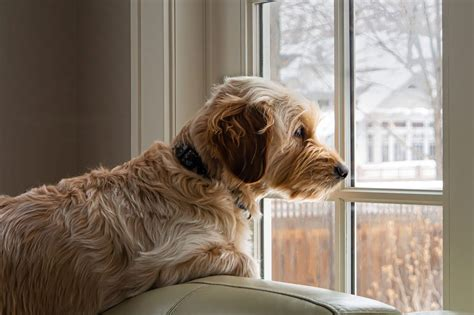Discover the meaning behind dog teeth clacking and other anxiety signs. Learn how to help your anxious dog with expert tips and personal insights.
As a dog owner, I've experienced firsthand the challenges of dealing with canine anxiety. One particular behavior that caught my attention was my dog's tendency to "clap" or clack her teeth when nervous. This unusual habit led me down a path of research and discovery about dog anxiety and its various manifestations.
My Personal Experience with Canine Anxiety
When we first adopted our rescue dog, Luna, we noticed she had some quirky behaviors. One of the most noticeable was her habit of rapidly clicking her teeth together when she felt anxious or overwhelmed. At first, we weren't sure what to make of it. Was she cold? Excited? It took some time and observation to realize this was actually a sign of her anxiety.
Luna's teeth clacking would often occur during thunderstorms, when meeting new people, or in unfamiliar environments. The sound was distinct - a deep, rhythmic clicking that was quite different from normal doggy behaviors. It was clear that this was her way of coping with stress.
The Science Behind Canine Anxiety
Prevalence of Anxiety in Dogs
Anxiety in dogs is surprisingly common. According to a study published in Scientific Reports, 72.5% of dogs exhibit some form of problematic behavior. Noise sensitivity, which can often trigger anxiety responses like teeth clacking, affects 32% of dogs, making it the most common anxiety-related trait.
Physical Manifestations of Anxiety
While teeth clacking isn't as widely recognized as some other anxiety signs, it falls into a category of stress-related behaviors that dogs may exhibit. Other common signs include:
- Panting
- Trembling
- Excessive barking
- Hiding
- Destructive behavior
These behaviors are the canine equivalent of human anxiety responses like nail-biting or fidgeting.

Understanding Teeth Clacking in Dogs
Teeth clacking, also sometimes referred to as jaw chattering, can serve several purposes for dogs:
-
Stress Relief: Similar to how humans might grind their teeth when stressed, dogs may clack their teeth as a coping mechanism.
-
Communication: In some cases, teeth clacking can be a way for dogs to communicate discomfort or uncertainty to their owners or other dogs.
-
Sensory Processing: For some dogs, especially those with noise sensitivities, teeth clacking might be a way to process overwhelming sensory input.
-
Medical Issues: In rare cases, teeth clacking could be a sign of a medical problem, such as dental pain or a neurological issue.
Helping Your Anxious Dog
If you've noticed your dog exhibiting anxiety-related behaviors like teeth clacking, there are several steps you can take to help:
-
Identify Triggers: Keep a log of when your dog shows signs of anxiety. This can help you pinpoint specific triggers.
-
Create a Safe Space: Provide a quiet, comfortable area where your dog can retreat when feeling overwhelmed.
-
Gradual Exposure: If your dog is anxious about specific stimuli (like loud noises), try gradually exposing them in a controlled, positive way.
-
Consult a Professional: A veterinarian or certified animal behaviorist can provide tailored advice and may recommend behavioral therapy or medication if necessary.
-
Consider Calming Aids: Products like ThunderShirts or pheromone diffusers can help some dogs feel more secure.
The Role of Training and Socialization
Early socialization and ongoing training play crucial roles in preventing and managing canine anxiety. The American Kennel Club (AKC) emphasizes the importance of exposing puppies to a variety of people, places, and situations during their critical socialization period (between 3 and 16 weeks of age).
For adult dogs with existing anxiety issues, training techniques like desensitization and counterconditioning can be effective. These methods involve gradually exposing the dog to their anxiety triggers while creating positive associations.
A Holistic Approach to Canine Well-being
It's important to remember that anxiety in dogs, like in humans, often requires a multifaceted approach. Diet, exercise, and overall health all play roles in a dog's mental well-being. Regular check-ups with your veterinarian, a balanced diet, and plenty of physical and mental stimulation can all contribute to reducing anxiety.
Conclusion: Empathy and Understanding
As I've learned through my journey with Luna, understanding and addressing canine anxiety requires patience, observation, and often professional guidance. Behaviors like teeth clacking, while sometimes puzzling, are often our dogs' ways of communicating their discomfort or stress.
By recognizing these signs and responding with empathy and appropriate interventions, we can help our canine companions feel more secure and content. Remember, every dog is unique, and what works for one may not work for another. The key is to remain patient, consistent, and attuned to your dog's individual needs.
